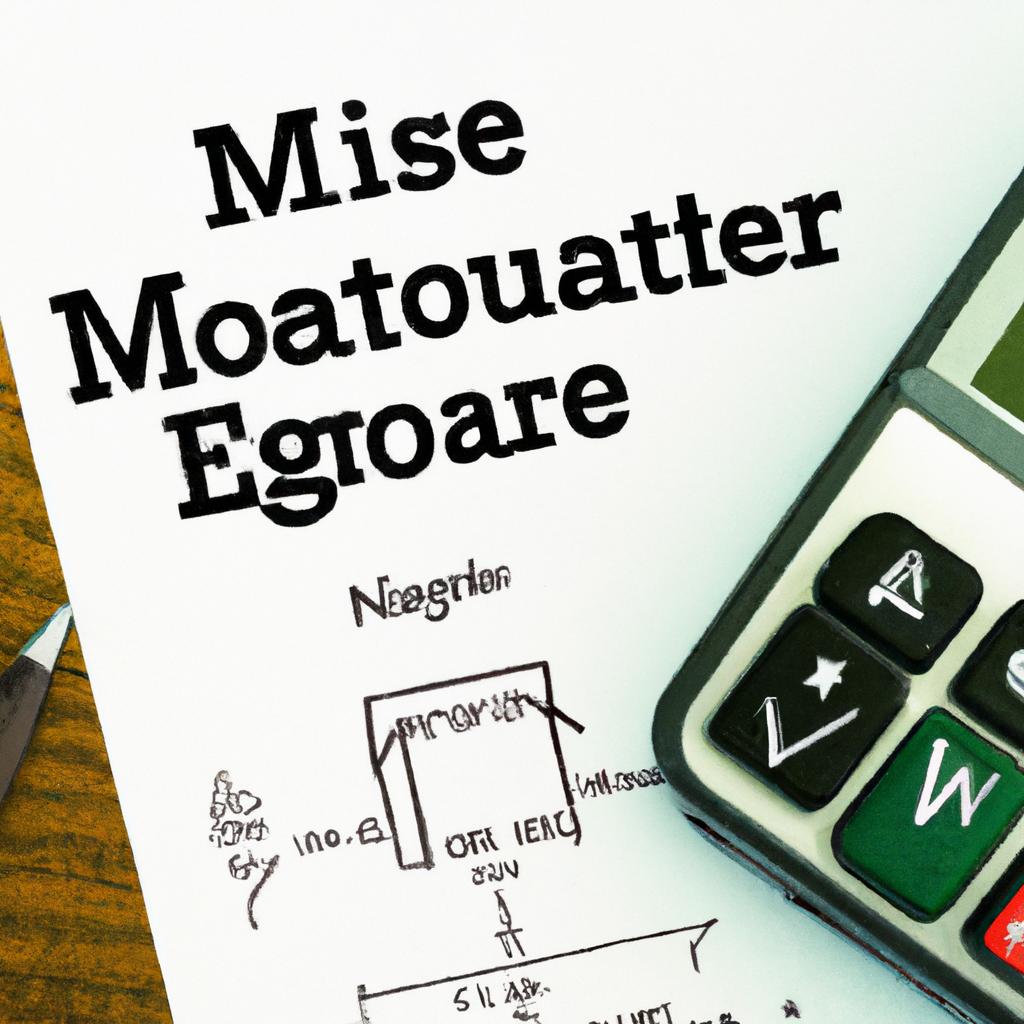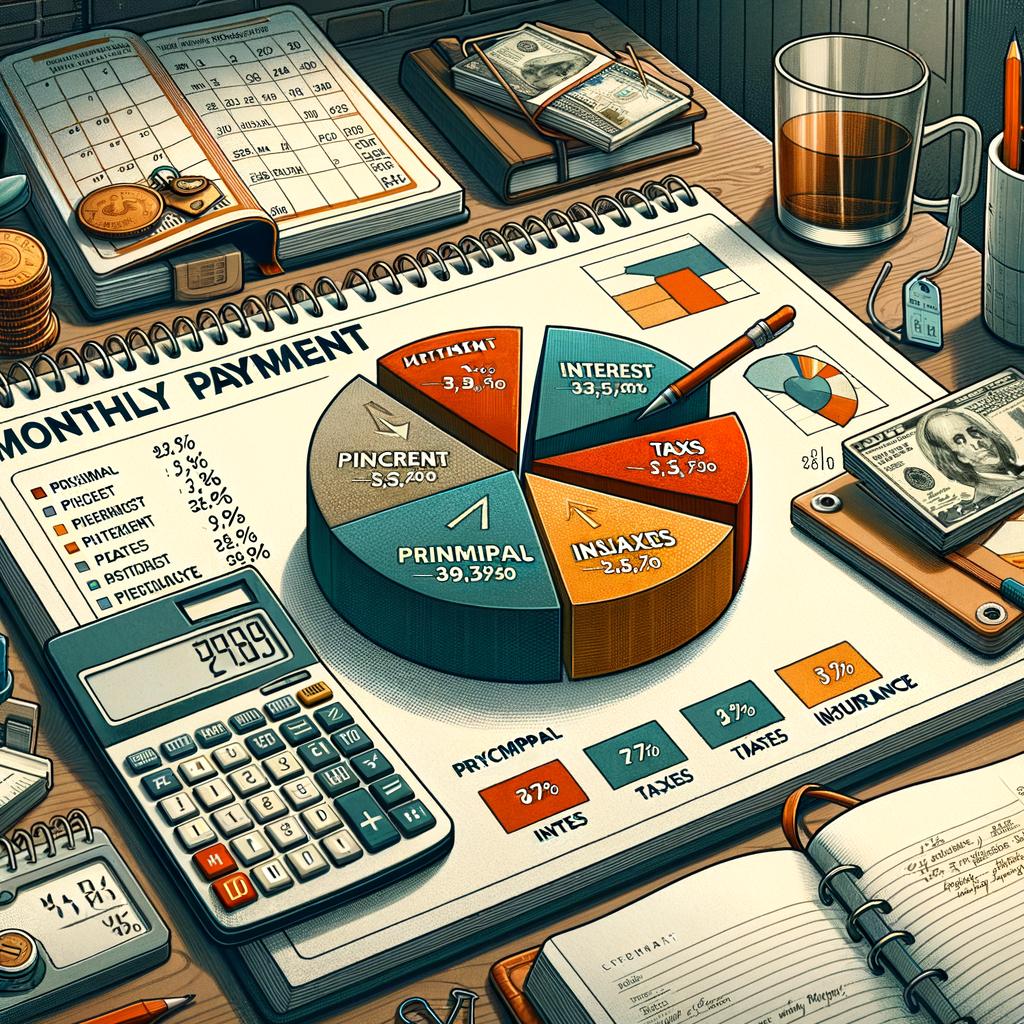In the world of homeownership, few tools are as indispensable yet overlooked as the humble mortgage calculator. Imagine stepping into a cavernous library filled with endless volumes of financial data, interest rates, and payment schedules. Here, nestled between the dusty tomes, lies a sleek, digital artifact that can decode this overwhelming trove with the simplicity of a few keystrokes. This, dear reader, is the magic of the mortgage calculator—a modern marvel that transforms the labyrinthine process of securing a home loan into a journey of clarity and informed choices. This article will explore the essence of this tool, revealing its hidden potentials and guiding you through its practical applications in today’s ever-evolving real estate landscape.
Table of Contents
- Understanding the Basics: What Is a Mortgage Calculator?
- Navigating Features: How to Use Your Mortgage Calculator Effectively
- Interpreting Results: Making Sense of Your Monthly Payments
- Expert Tips: Maximizing the Benefits of Mortgage Calculators
- Q&A
- Final Thoughts

Understanding the Basics: What Is a Mortgage Calculator?
When embarking on the journey of homeownership, one of the essential tools you’ll come across is the mortgage calculator. This vital financial instrument aids in demystifying the complexities surrounding home loans and paints a realistic picture of what you can afford. Essentially, it helps borrowers estimate their potential monthly mortgage payments, incorporating various critical factors.
Mortgage calculators take into account the principal loan amount, the interest rate, and the loan term. With this input, they generate an approximate amount you’ll need to pay each month. Principal refers to the amount of money borrowed, while the interest rate is the cost of borrowing that money, expressed as a percentage. The loan term, typically 15 or 30 years, is the period over which you agree to repay the loan.
In addition to these primary components, a comprehensive mortgage calculator might also include:
- Property Taxes: These are typically assessed by local governments and can significantly impact your monthly payment amount.
- Homeowners Insurance: Lenders usually require this to protect the property from potential risks like fires or natural disasters.
- Private Mortgage Insurance (PMI): If your down payment is less than 20% of the home’s value, PMI may be required as a safety net for the lender.
- HOA Fees: Homeowners Association fees may apply to certain properties, especially those within planned communities or condominiums.
To demonstrate, let’s look at a sample scenario using a mortgage calculator:
| Loan Amount | Interest Rate | Loan Term | Estimated Monthly Payment |
|---|---|---|---|
| $300,000 | 4% | 30 years | $1,432 |
In this scenario, with a loan amount of $300,000, an interest rate of 4%, and a term of 30 years, the estimated monthly payment is around $1,432. This figure illustrates the principal and interest portions of the payment. However, remember to factor in property taxes, insurance, and potential HOA fees that could significantly increase this amount.
One of the key benefits of using a mortgage calculator is its ability to let you experiment with different scenarios. You can adjust the loan amount, interest rate, and term to see how these changes affect your monthly payments. This flexibility helps in planning your budget and understanding how much house you can realistically afford.
Moreover, it enables prospective buyers to assess the viability of various loan options, providing a comparative look at fixed-rate versus adjustable-rate mortgages and how different down payment amounts can influence the overall cost of the loan.
a mortgage calculator is not only a number-crunching tool but also a strategic ally in your home-buying process. It ensures you’re well-prepared and informed, making the monumental task of buying a home more manageable. By understanding its components and leveraging its capabilities, you can take confident steps towards your dream home.

Navigating Features: How to Use Your Mortgage Calculator Effectively

Interpreting Results: Making Sense of Your Monthly Payments
Understanding the results from your mortgage calculator can feel like deciphering a complex code. Let’s break down the key components so you can confidently navigate your monthly payment information.
First, you’ll notice the principal payment. This is the portion of your monthly payment that goes directly towards the loan’s balance. Early in your mortgage term, this amount might be relatively small, but it increases over time as you pay down your debt.
Next up is the interest payment. This is the amount you pay your lender for borrowing money. It’s calculated as a percentage of the outstanding principal balance. In the early years, a larger part of your payment goes toward interest. Here’s a quick look:
| Time Period | Principal Payment | Interest Payment |
|---|---|---|
| Year 1 | $500 | $1,200 |
| Year 10 | $900 | $800 |
The mortgage calculator also factors in property taxes. Depending on your location, this amount can vary significantly. In many cases, your lender will divide your estimated annual tax bill by 12 and add that amount to your monthly payment.
Homeowner’s insurance is another critical component. This protects your property from unforeseen events like fire, theft, or natural disasters. Your lender may require you to pay this as part of your monthly mortgage payment, especially if they’re managing the escrow account.
- Private Mortgage Insurance (PMI): If your down payment is less than 20%, this extra charge offers lenders additional protection.
- HOA Fees: Applicable if you live in a community with a homeowners association, which could include services like landscaping and community amenities.
Additionally, some calculators might include estimates for maintenance and utilities. While not part of the mortgage itself, planning for these costs can give you a more comprehensive view of your monthly housing expenses.
Analyzing your results can also reveal opportunities for saving money. For example, increasing your monthly payment by a small amount can shave years off your loan and save you thousands in interest. Imagine paying an extra $200 a month:
| Original Term | New Term | Total Savings |
|---|---|---|
| 30 Years | 25 Years | $50,000 |
By understanding and adjusting each component, you can optimize your mortgage payments, save money, and achieve financial stability. Armed with this knowledge, you’re well-equipped to make informed decisions on your mortgage journey.

Expert Tips: Maximizing the Benefits of Mortgage Calculators
Mortgage calculators are powerful tools, but to harness their full potential, a few expert tips can go a long way. Whether you’re a first-time homebuyer or looking to refinance, these insights can help you make more informed decisions and save money in the long run.
1. Understand Different Calculator Types
Not all mortgage calculators are created equal. There are several types available, each designed to meet specific needs. Consider exploring:
- Basic Mortgage Calculator: Provides monthly payments by inputting home price, down payment, interest rate, and loan term.
- Amortization Calculator: Breaks down payments into principal and interest over the loan term.
- Affordability Calculator: Determines how much house you can afford based on your income, debts, and other financial factors.
2. Plug in Accurate Data
The accuracy of your mortgage calculator results heavily relies on the data you input. Double-check your financial details such as:
- Income: Include all sources to get a clear picture.
- Expenses: Factor in recurring monthly costs and any other financial commitments.
- Credit Score: A higher score often means a lower interest rate.
3. Compare Different Loan Scenarios
Take advantage of the flexibility of mortgage calculators by comparing various loan scenarios. This could include:
- Shorter vs. longer loan terms
- Different interest rates (fixed vs. adjustable)
- Varying down payment amounts
Table: Example Loan Scenarios
| Term | Interest Rate | Monthly Payment |
|---|---|---|
| 15 Years | 3.25% | $1,500 |
| 30 Years | 4.00% | $1,200 |
4. Factor in Additional Costs
Beyond principal and interest, remember to include additional costs like taxes, insurance, and private mortgage insurance (PMI). Many calculators allow you to input these extra costs to get a more comprehensive estimation.
5. Consider Prepayment Options
Some mortgage calculators can model the impact of making extra payments towards your principal. This can significantly reduce the amount of interest paid over the life of the loan and shorten the loan term. Experiment with different prepayment amounts to see their effects.
6. Take Inflation into Account
Long-term financial planning should consider inflation. While your mortgage payment might be fixed, other living expenses will likely rise over time. Use advanced calculators that factor in inflation to get a more realistic financial overview.
7. Revisit the Calculator Frequently
Your financial situation and market conditions can change. Regularly revisiting and adjusting your input data will ensure that you have the most up-to-date information to guide your mortgage decisions. Stay informed about interest rate trends and refinance options that could benefit you.
Q&A
Q: What is a mortgage calculator?
A: A mortgage calculator is a digital tool designed to help potential homebuyers and homeowners estimate their monthly mortgage payments. By inputting key information such as loan amount, interest rate, loan term, and down payment, users can quickly see how different variables affect their monthly payment and overall loan cost.
Q: Why is a mortgage calculator important for homebuyers?
A: A mortgage calculator is essential for homebuyers because it provides clarity and foresight. It allows users to experiment with different financing scenarios, helping them understand what they can afford and how different interest rates or loan terms impact their budgets. This empowers them to make informed decisions and avoid potential financial stress down the road.
Q: Can a mortgage calculator determine if I qualify for a loan?
A: While a mortgage calculator can provide useful estimates and insights into payment schedules, it cannot determine if you qualify for a loan. Qualification depends on various factors including your credit score, income, debt-to-income ratio, and employment history, which are typically assessed by lenders during the loan application process.
Q: How user-friendly are mortgage calculators?
A: Most mortgage calculators are designed to be very user-friendly. They typically feature intuitive interfaces where users can input their data easily and receive immediate results. Many also offer additional features like adjustable interest rates, extra payment options, and amortization schedules to provide a comprehensive financial picture.
Q: Are mortgage calculators accurate?
A: Mortgage calculators can provide relatively accurate estimates based on the information you enter. However, they may not account for all potential costs such as property taxes, insurance, private mortgage insurance (PMI), or homeowner association (HOA) fees. For complete accuracy, it’s advised to consult with a mortgage professional who can consider these additional factors.
Q: Do all mortgage calculators offer the same features?
A: No, not all mortgage calculators are created equal. Some offer basic computations while others come with advanced features like customizable amortization schedules, prepayment options, and graphical representations of payment breakdowns. It’s worth exploring different calculators to find one that best meets your needs.
Q: Is it better to use an online mortgage calculator or consult a mortgage advisor?
A: Using an online mortgage calculator provides quick, initial insights and is a great starting point. However, consulting a mortgage advisor offers personalized advice that takes into account your unique financial situation and long-term goals. For the most balanced approach, it’s beneficial to use both tools in conjunction.
Q: Can using a mortgage calculator help with refinancing decisions?
A: Absolutely. A mortgage calculator can be a valuable resource when considering refinancing options. By inputting new loan terms and interest rates, you can compare them with your current mortgage to see if refinancing would be financially advantageous, potentially saving you on interest payments or reducing your monthly payment.
Q: Are there any limitations to using a mortgage calculator?
A: While mortgage calculators are powerful tools, their limitations include not accounting for all possible expenses and not considering changes in financial circumstances over time. They also don’t offer personalized financial advice like a mortgage advisor would. Therefore, while they are helpful for preliminary planning, they shouldn’t be the sole resource for making major financial decisions.
Q: Where can I find a reliable mortgage calculator?
A: Reliable mortgage calculators can be found on numerous financial websites, including those of banks, lending institutions, and real estate platforms. Many of these offer robust calculators with a variety of features that cater to different needs and preferences. It’s advisable to compare a few to find one that aligns with your specific requirements.
Final Thoughts
As we stand at the crossroads where numbers meet aspirations, the mortgage calculator emerges not just as a tool, but as a companion on your home-buying journey. Neither a crystal ball nor a mere spreadsheet, it bridges the gap between dream and reality, mapping out the potential paths to your future doorstep. So, as you navigate the labyrinth of interest rates and monthly payments, remember that each calculated figure is a stepping stone towards unlocking the front door of possibility. Here’s to turning the dream of homeownership into a tangible key, one calculated step at a time.
